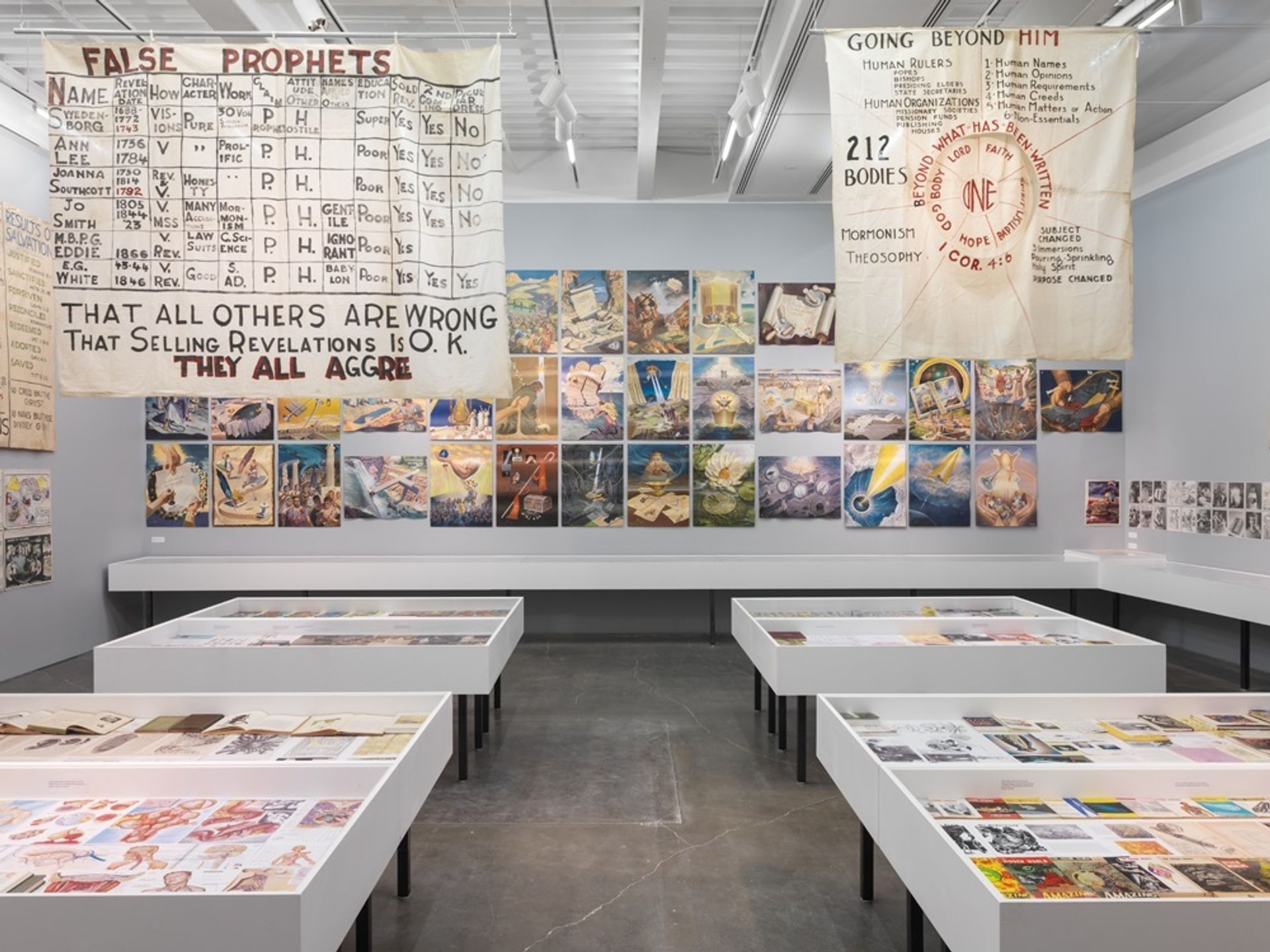Stepping into Jim Shaw’s current exhibition at the New Museum in New York, The End is Here, one wonders just how much is on his mind, and how all this stuff could possibly fit into his studio. The show includes a tremendous amount of work, including My Mirage (1985-91), a selection of Dream Drawings (1992-99), his Thrift Store Paintings (first shown at the Metro Pictures gallery in New York in 1991), a collection of religious propaganda and ephemera titled The Hidden World which has been presented in various iterations, the enormous murals of Labyrinth: I Dreamt I was Taller than Jonathan Borofsky (2009) and even early works from Shaw’s graduate school work at CalArts. In trying to navigate it all, it becomes clear that the show presented a curatorial challenge: the question was not only how much to include, but also what connections could be drawn between the various works of an artist obsessed with mythology, personal psyche, narrative and counter-culture. The exhibition feels like an attempt at spectacle, but it is beautiful also in its more subtle moments. Its size means it could easily take half a day to go through.
The show has no real beginning or end, so I chose to start on the second floor, which includes Shaw’s early zines, retouched photographs, Xerox works, and noise music by the band Destroy All Monsters. These pieces, sophisticated yet crude, allow insight into the birth of Shaw’s mythology, which carries throughout all his work. His draftsmanship and craft are clear vehicles for his obsession with Martians, Hollywood, horror films and conspiracy theories. Memorable works include the large-scale painting Heaven’s Gate (2012), which depicts an anonymous, washed-out landscape, perhaps suburban, with surreal hallucinations painted vividly on top, alluding to the female body. The titles refer to religious groups and cults from the 1970s. Another painting, The Gate (2014), depicts Alfred Hitchcock spewing orbs onto a greasy bag of McDonald’s hamburgers, all adding up to a surreal set of clues about pop culture and consumption, or even a scary story.

The spectacle that is the third floor is home to the Thrift Store Paintings, sel ected by Shaw himself. The works come from his own collection of paintings purchased for under $25 at various thrift stores and flea markets. They have since informed artists and curators including Massimiliano Gioni, this show’s co-organiser, about how exhibitions can be organised through the appropriation of outsider art and the mining of visual culture. The point of Shaw’s work is that pop culture and personal mythology are engrained in the brain, and somehow both consciously and unconsciously are transmitted through all forms of media: drawing, painting, noise music, sculpture, video, archival material… the list goes on. But when the Thrift Store Paintings were shown at Metro Pictures in 1991, their counter-cultural motivation made sense because these paintings offered untold narratives by unknown artists. They were gleaned from heaps of junk and made respectable. At the New Museum, the attempt at subversion falls flat. It looks more like a like lazy “greatest hit” from Shaw’s body of work.
Sadly, The End is Here does not contain many of Shaw’s Oist works, in which he investigates a fictional religion where a supreme female deity is worshipped. The most remarkable work in the entire show is The Whole: A Study in Oist Integrated Movement, a video from 2009 where women in glittery, pastel-colored robes and matching wigs dance through a carpeted room to a dreamlike soundtrack and end up lounging under a sculpted, Dr. Seuss-like banyan tree. The video makes one realise that a place of worship can spring up anywhere: this one looks like a room in a Los Angeles strip mall with cheap blue carpeting and uneven lighting.
There are plenty of works that were omitted, some of which are on view in the concurrent exhibition Jim Shaw: Entertaining Doubts at Massachusetts Museum of Contemporary Art in North Adams (until 31 January 2016). But imagine seeing Shaw’s religions and didactic ephemera in a context committed to the volume and gravity of the work. When the spectacle is taken out of the exhibition, what’s left is Shaw’s unconscious. His best work is about defining his reality. He is obsessed with the great amount of stuff that describes his distorted America. That’s when this exhibition sings—or perhaps more appropriately, noises together with other noises, squirts, bubbles, burps and chimes.
Sophie Lvoff is an artist and curator based in New York. She is currently teaching photography at the Pratt Institute.
Jim Shaw: The End is Here, New Museum, New York, until 10 January 2016

